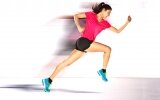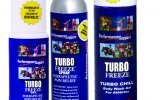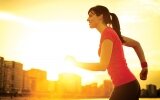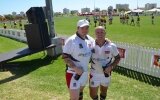- Magazine
- #readityourway
- Weekly Stories
- #shareyourstory
-
Adventure
- Abroad Travelling
- Africa Travelling
- Events
- Expos & Shows
- Festivals
- Fishing
- Free Diving
- Gliding
- Horse Riding
- Inspiring People
- Islands Travelling
- Kite/Windsurfing
- Motorbiking
- Motorised Water Sports
- Mountaineering
- Mountain Biking
- Off-road 4x4
- Off-road Motorbiking
- Paddling
- Performance Driving
- Photography
- Rock Climbing
- Rollerblading
- Sailing
- Scuba Diving
- Skateboarding
- Skydiving
- Snowboarding & Skiing
- Surfing
- Swimming
- Trail Running
- Wakeboarding
- Waveski Surfing
-
Sport
- Adventure Racing
- Fishing
- Free Diving
- Gliding
- Health & Fitness
- Horse Riding
- Inspiring People
- Kite/Windsurfing
- MMA
- Motorbiking
- Mountain Biking
- Multi-sport
- Off-road 4x4
- Off-road Motorbiking
- Paddling
- Performance Driving
- Photography
- Road Cycling
- Road Running
- Rock Climbing
- Rollerblading
- Sailing
- Scuba Diving
- Skateboarding
- Skydiving
- Snowboarding & Skiing
- Surfing
- Swimming
- Rugby
- Trail Running
- Triathlon
- Wakeboarding
- Waveski Surfing
- Lifestyle
- Calendar
Being Competitive Without Eating Meat
Words: Hannele Steyn
Topic:
Health & Fitness
Much is said about a high-fat, high-protein and low-carbohydrate diet, but where does that leave the vegetarian and fruitarian?

If we look at some of the top athletes who are vegetarians, like Glen Macnamara (seven-time Springbok duathlete), Bill Pearl (Mr. Universe), Bill McCarthy (power lifter), Marzia Prince (Ms. Bikini) and Brendan Brazier (pro Ironman) and many others, they have proved that you can be competitive without eating meat.
However, we need around 1,5-2 g of protein, per kilogramme of body weight, per day. Amino acids are the building blocks of proteins and proteins are the building blocks of muscles. Muscles are the building blocks of champions and muscles burn fat to give these champions lean muscle mass that make a cyclist climb better and a runner fly better. Another important benefit is that if you add protein to a carbohydrate it will help sustain your blood sugar levels for longer, which is crucial to your overall fitness.
Although a vegetarian can get enough fats and protein from fruits, vegetables and nuts, the issue here is they will have to consume much more in volume to get to their 1,5-2 g of protein, per kilogramme of body weight. If, for example, you weigh 60 kg you would need to eat at least four to five cans of tuna per day, and that's a lot of tuna. But to get the same amount of protein from, say, lentils, you're looking at a 'bucket full' J. For those who eat meat, this is not such a big problem as there is already hidden fat between the fibres in animal protein and meat is high in protein. If you still eat eggs and drink milk, at least you can compensate a little, but it's not enough.
So, if you don’t eat any animal protein and only acquire protein solely from vegetable sources, you won't get the complete amino acid profile that meat offers. I would therefore suggest including a protein supplement into your diet, however much you might be against it. Something like PVM XTR is great as it contains all four proteins (casein, whey, soy and albumin) and the raw materials are from very good sources. In terms of sufficient fats in your daily regime, olive oil, grape seed oil, avos and so forth are excellent sources. Nuts especially offer an abundant supply of unsaturated fat, with walnuts providing one of the best sources of polyunsaturated omega-3 fat.
As a competitive cyclist and lover of meat, I follow a high, lean protein with high essential fats (from nuts, oils and avocado) and low glycaemic carbs diet, and try to stay away from processed foods, trans-fats and fatty or fried foods - and I feel great! However, if you are a vegetarian, follow a diet that has a wide variety of grains, legumes, nuts, seeds, superfoods and good oils, such as avo, grape seed and olive oils. Rice and pea protein, as well as hemp seed are also very good sources. If you eat eggs, the egg white is high in protein, but try to find organic eggs.
One thing about being a vegetarian though is that you'll never have to worry about not getting enough fibre J. Furthermore, the soluble fibre in some protein sources, such as beans and oats, combined with a high intake of unsaturated fat can keep your cardiovascular system in optimal health.
As the pros have shown us, no matter your diet preference - be it a vegetarian, fruitarian or meat - you can compete at a world-class level as long as you follow an eating plan that's tailored to your specific dietary requirements and lifestyle needs.
Healthy options:
Breakfast:
Passion4Wholeness home-made muesli that is not roasted (full of fat) or covered with sugar, but rather has low glycaemic carbs (whole rolled oats), whole almonds and pumpkin seeds (a good source of protein and good fats), linseeds (good source of omega-3 oils) and cinnamon (good for blood sugar levels), raisins (high GI for energy) and cranberries (antioxidants) OR poached or boiled eggs on rye bread.
Snack:
Game biltong OR fruit and plain yoghurt OR nuts and dates.
Lunch:
Baked potato with tuna filling, steamed vegetables and a wholesome salad OR brown basmati rice with beans OR lean chicken and steamed vegetables and salad.
Snack:
Same as the morning.
Dinner:
Any lean protein, steamed vegetables and salad.
Remember to stay away from any processed and deep fried foods, as they are full of saturated fats and preservatives, which are very bad for your health!
Worldwide assumption is that our ancestors used to live off raw meat, but studies actually show that they primarily lived off fruits and vegetables because they were easy to find.
Symptoms of protein deficiency
It is time to reevaluate your protein intake if you experience constipation, fatigue, low blood pressure, brittle nails, hair loss or flabby muscles. Additionally, excess protein can be equally dangerous, causing premature aging, vitamin and mineral deficiency and tremendous strain on the kidneys.
Veggie protein sources
Broccoli, cauliflower, spinach, peas, mushrooms and corn are among some fabulous vegetable choices that contain protein. In addition to eating plenty of fresh vegetables, protein-rich grains such as quinoa, brown rice, whole wheat and beans should be a regular part of a vegetarian diet.
Sprouts are super protein foods
Sprouted seeds, grains and beans are easy to grow right in your own kitchen and can quadruple the protein value of a food item. Perfect foods for sprouting include quinoa, lentils, mung bean, sunflower seeds, flaxseed, chickpeas and soy beans. Soak your chosen item in water overnight and then rinse well and drain. Place your seeds, beans or grains in a glass container in a sunny location and cover with a kitchen towel. Rinse and drain every 8 to 12 hours, allowing the sprouts to grow for two or three days. Sprouts will keep in the refrigerator for one week and are wonderful additions to salads. Remember that your sprouts can double in size as they grow, so start with about half the amount you would like to end up with.
Source: www.livestrong.com
Issue:
Issue 22 Feb'13
Contributor:
Hannele Steyn










